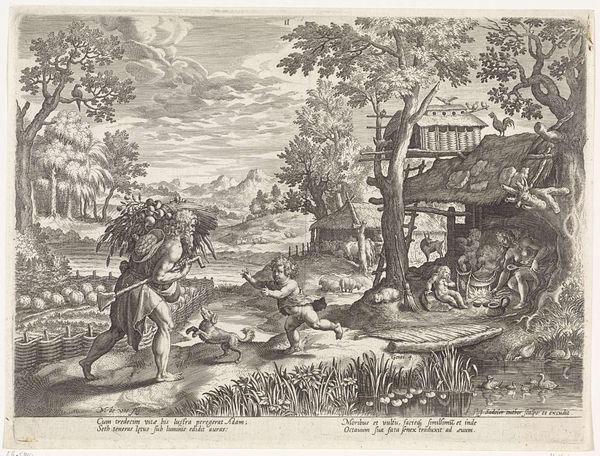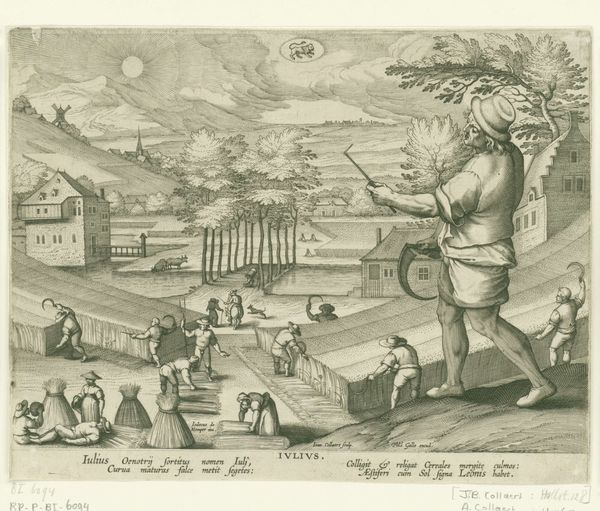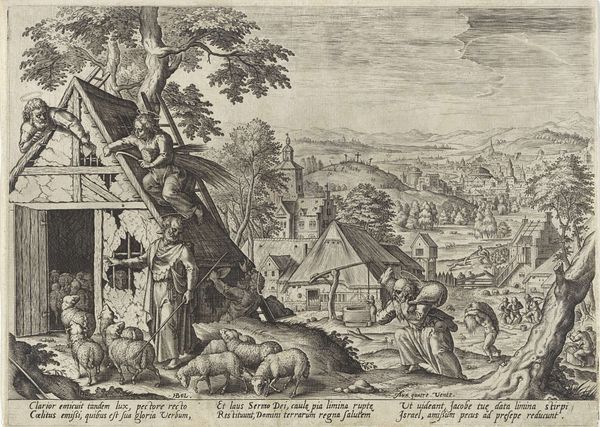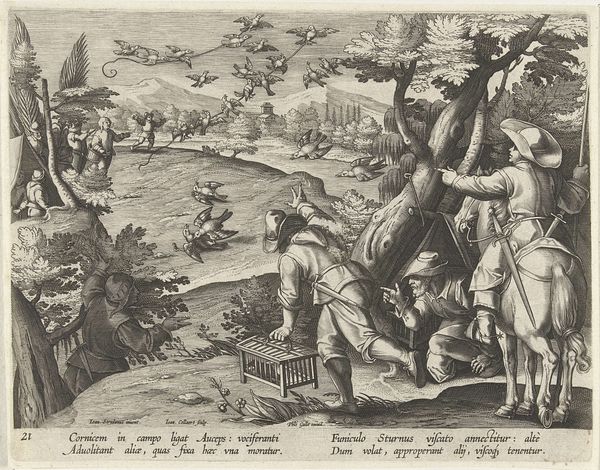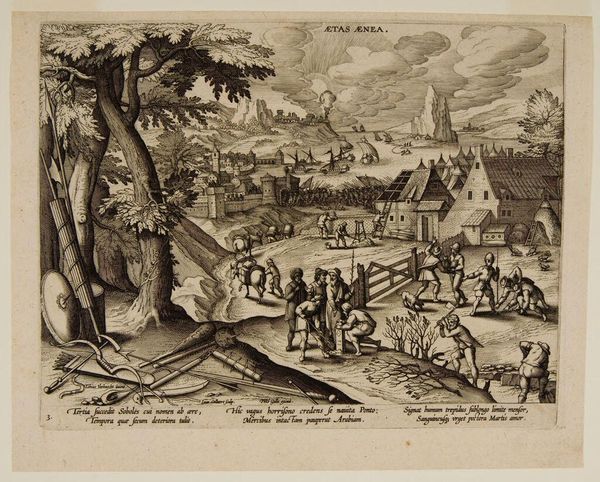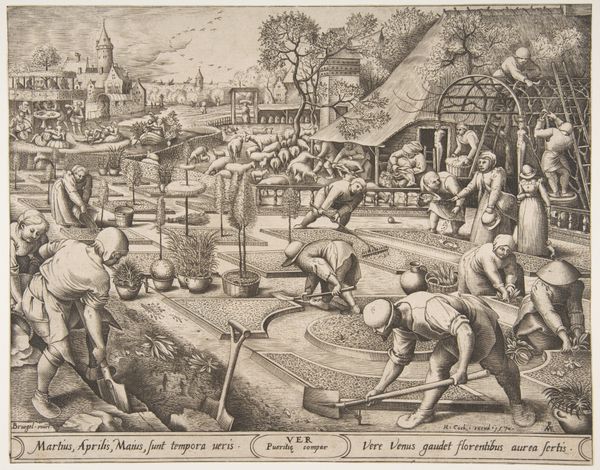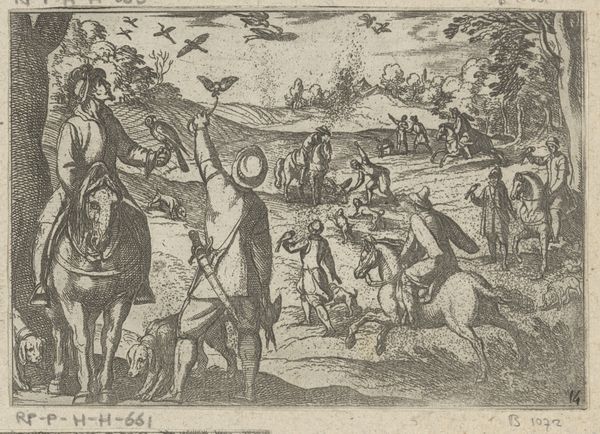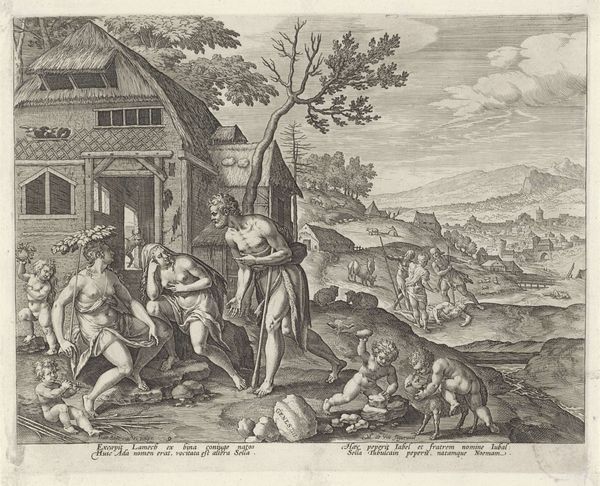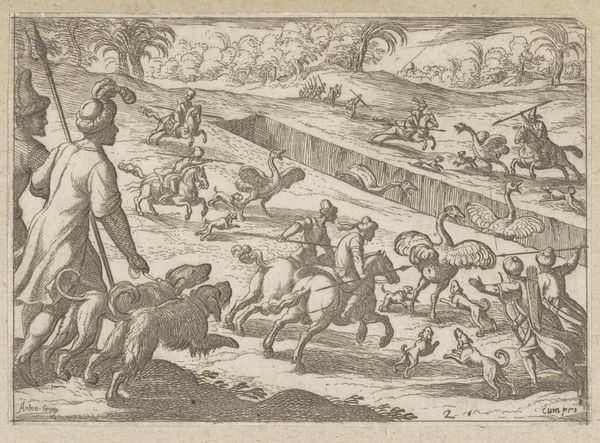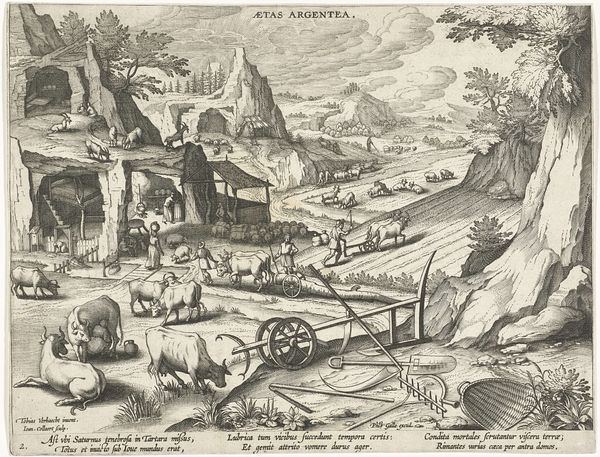
print, etching, engraving
# print
#
etching
#
landscape
#
mannerism
#
figuration
#
line
#
genre-painting
#
history-painting
#
northern-renaissance
#
engraving
Dimensions: height 207 mm, width 262 mm
Copyright: Rijks Museum: Open Domain
Jan Collaert II created this engraving, "Juni," sometime before his death in 1628. It's a depiction of the month of June, viewed through the lens of labor and the agricultural calendar. This image creates meaning by drawing on visual codes tied to seasonal work and zodiacal signs. Made in the Netherlands, its landscape reflects the concerns of a culture deeply invested in land use and productivity. Collaert’s print isn't merely a picturesque scene, but a window into the social structures of his time. The act of sheep shearing, the harvesting of crops, and the laundering of wool, all tell of an economy and a society built on the cycles of nature. Note the prominent depiction of Cancer, the zodiac sign for June, reminding us of the influence of astrology on daily life. Understanding this print requires a deep dive into 17th-century Netherlandish life, using sources like agricultural manuals, weather records, and even estate inventories. Art history, in this case, becomes a dialogue between image and context, revealing the intricate relationships between people, their environment, and their beliefs.
Comments
No comments
Be the first to comment and join the conversation on the ultimate creative platform.

